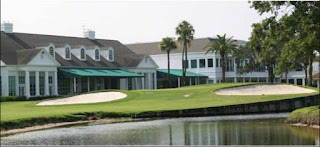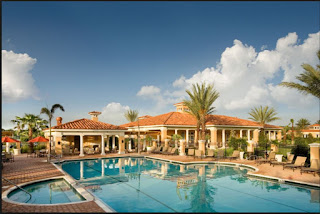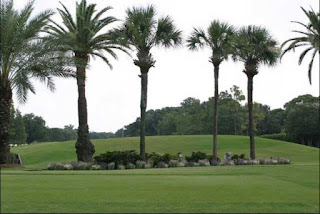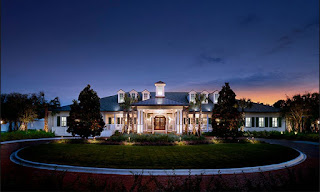Palma Ceia Golf And Country Club
BEGINNING
Palma Ceia Golf And Country Club is he first private golf and country club in the Tampa Bay area, Palma Ceia and was born in 1916 during a rapidly leveraging of golf around Palma Ceia and Tampa was in the midst of a real estate boom.In 1915, the Tampa Bay Land Co., owned by James F. Taylor, began to promote Palma Ceia Park, which at that time included the area south of the club to Bay to Bay, and from Mac Dill Avenue (then called Lisbon Street) to the area west where Dale Mabry Highway was built in the 1940's.
Taylor's vision in golf was to offer 100 acres of the subdivision to a group of businessmen to build a golf course. The original terms called for the group to lease the 100 acres for $1 per year and pay the annual property taxes. There was an option to purchase the golf course land after 10 years for $150,000. And so, Palma Ceia Golf and Country Club became a reality under the leadership of an original 10-man group that included Dr. J.B. Wallace, M.G. Gibbons, S. F. Knight, James T. Swann and Dr. J. B. Farrior.
The group accepted the lease and constructed the golf course and a small clubhouse. They began business by offering memberships that specified an initiation fee of $25 (which was generally waived) and monthly dues of $3.50. The front door of the club opened onto Estrella St., which was then a dirt road. Many younger club members would take the Port Tampa streetcar to the stop at Bayshore and Barcelona and then cut through the woods to the golf course.
The original designer of the Palma Ceia golf track was Tom Bendelow, a Scot, who later became the Midwest's most prolific designer of golf courses during the 1920's. The street that today runs alongside Palma Ceia's No. 2 fairway is called Bendelow Trail.
The April 18,
"The men and women who are buying Palma Ceia Park lots (for low prices of $500 to $800) will have cause for congratulations before the summer is over. The opening of the Palma Ceia Golf Course and new country club in August will enhance the value of all the land in the surrounding territory. People of wealth and leisure will build around the course."
Truer words were never spoken. Today some of Tampa Bay's most prominent citizens and personalities own homes along the fairways of Palma Ceia.
EARLY YEARS, TOUGH TIMES
One of the first official events of the club was the opening of the new clubhouse on Washington's Birthday, Feb. 22, 1917, which featured an inter-club golf match. Competitors played in plus-fours with long sleeve shirts, ties and straw skimmers, the golfing attire of the era. Club President S.F. Wooten became the first player to break 90 at Palma Ceia by shooting an 89 that day. The club held a ball on the eve of that match, as its first official social event.
By 1925 many of the Palma Ceia Park residential lots had been sold and a number of people had already built homes. But there was still the matter of the $150,000 purchase that needed to be addressed and some feared that the golf course land could be turned into a housing development. But once again the members stepped forward and purchased bonds to raise the required amount to complete
Palma Ceia was becoming a resilient survivor in its early years, something that carried it through the stock market crash and bank failures of 1929. Prosperity returned and stayed with the club until the next challenge came with World War II. The years 1941-45 were similar to the World War I experience, but with the membership larger, the club was able to borrow money for operating funds until after the war, and then pay off the certificates when prosperity returned.
PROFESSIONAL GOLF
The sand bunker adjacent to the No. 9 green is famous as the location where Gene Sarazen perfected the first sand wedge club, which he crafted by adding a flange to a pitching wedge. Additionally, the club has played host to many state and city championships and national qualifying rounds.
During the decades of the 20's, 30's and 40's, Palma Ceia was a center for many golf tournaments, with many of the world's greatest professional players using Palma Ceia as a hub of operations. The club played host to such famous players as Horton Smith, Ralph Guldahl, Ray and Lloyd Mangrum, "Wild Bill" Melhorn, Billy Burke, Willie Macfarlane and Henry Picard. Paul Runyon and Johnny Revolta won their first tournaments at Palma Ceia and the great Walter Hagen won his last individual tournament here.
Women's golf burst on the scene in the 1940's and Palma Ceia was at the forefront. Through the efforts of members Sam Davis and Harry Root, Jr. along with the Tampa Chamber of Commerce, Palma Ceia staged a women's event called the Tampa Open. At that time there were only about a dozen women golf professionals and only two or three tournaments where they competed with the top women amateur players. It was during these early Palma Ceia women's tournaments where women's golf began to catch on as a spectator sport.
THE "BIRTHPLACE" OF WOMEN'S PROFESSIONAL GOLF
Palma Ceia earned particular recognition in 1948 when, during a women's tournament, some players met at the club to form the Ladies Professional Golfers Association (LPGA). It wasn't long before the LPGA had such stars as Babe Zaharias, Louise Suggs, Patty Berg and Betty Jameson on their roles. The players reportedly loved Palma Ceia more than any other club, but in 1960 the club's planned new clubhouse imposed restrictions during construction and thus ended the run of the women's tournament.Through the years, Palma Ceia has undergone a number of improvements. The original 1916 clubhouse, tennis courts, bowling alleys and wooden pro shop disappeared and were replaced by a modern pro shop (1952), a swimming pool and two-story building housing the locker rooms in 1960; the current, main clubhouse in 1962; new all-weather tennis courts in 1966, a clubhouse remodeling project in 1997 that included new locker rooms, a new pool and other amenities; and the latest clubhouse project in 2008 that included a new modern pro shop, lockers, and an expanded fitness facility.
Throughout the entire history of Palma Ceia, there
The next head golf professional was Gil Gonsalves, who began his service to the club in 1974 and retired in 2008. Through the years he became one of the area's outstanding head professionals and one of the finest teachers in the state. Gil played on the PGA tour during the period 1972-73. Gil was honored at a huge retirement/appreciation celebration in 2008, during which, Bob Ford (head pro at Oakmont and Seminole) spoke about his first job in the golf industry which was at Palma Ceia working for Gil as an assistant in the pro shop.
Our current head golf professional, Joe Hodge, was appointed to the post in 2008. Joe grew up at Palma Ceia and was a
Palma Ceia Golf And Country Club
 Reviewed by Unknown
on
1:39 PM
Rating:
Reviewed by Unknown
on
1:39 PM
Rating:
 Reviewed by Unknown
on
1:39 PM
Rating:
Reviewed by Unknown
on
1:39 PM
Rating:











No comments: